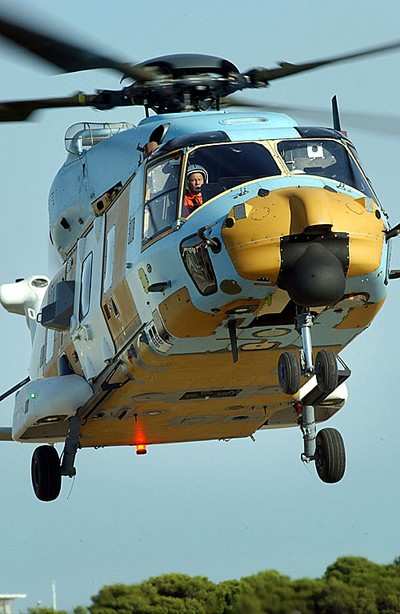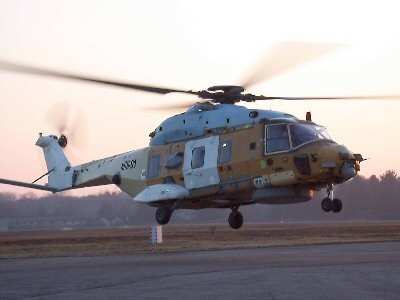Visual Alerts Given Via Display, Or In Flight Helmet Visor
EADS Defense and Security announced Monday it successfully
tested the military version of the HELLAS (helicopter laser radar)
obstacle warning system in flight. The equipment known as the
Military Obstacle Warning System (MilOWS) is being developed for
deployment on the NH90 helicopter.

The EADS Defense Electronics business unit has carried out the
first flight tests with MilOWS on board the HELLAS demonstration
helicopter for certification and as the basis for the approval of
different helicopter types following the successful development
phase. During these tests, the functionality of the equipment and
the performance of the sensor were verified under flight conditions
as required by the customer. Various obstacle scenarios were flown,
including low level flights and spiraling at a roll angle of up to
45 degrees.
MilOWS detected the obstacles as expected. The data recorded
during the flight tests serve to verify and optimize the algorithms
for recognizing and classifying obstacles in accordance with
military requirement profiles. Further flight tests with this
demonstration system are planned for October and November 2007 in
even more complex obstacle scenarios, such as military flight
profiles, according to the company.
"The further development of this military version takes into
account the customer's requirements for a helicopter flying under
military marginal conditions and is based on a further development
of the technology used in the civilian HELLAS version, which has
already been successfully introduced and deployed for several years
now by customers including the German federal police and border
guard. We expect this version of the product to be successfully
marketed throughout the world and have concrete orders in our order
books," explained Bernd Wenzler, Head of the Defense Electronics
Business Unit.
During the completed development phase, MilOWS equipment was
tested for several months in the NH90 integration rig at Eurocopter
in Ottobrunn, Germany. All the interface functionalities of the
NH90 system were demonstrated and involved both pilots and
customers. The current version of the MilOWS worked
"perfectly."
Likewise, the preliminary work for the mechanical integration of
the obstacle warning system into the NH90 helicopter was carried
out successfully, according to EADS.
HELLAS was developed at EADS Defense Electronics for deployment
in helicopters. HELLAS is a laser-based, electro-optical system,
which detects such obstacles as power lines reliably even if the
pilot has difficulties making them out during the flight.

The system scans the area in front of the helicopter with a
laser beam, which is not harmful to the human eye, and detects with
high precision even thin wire and metal cables at distances of more
than a mile. With the military version of HELLAS (MilOWS) potential
obstacles are classified into different categories, such as power
lines, masts or single, isolated objects and superimposed on a
video or FLIR image as obstacle symbols.
The pilot sees this information on a display or in the visor of
his flight helmet. In addition, acoustic warning signals to alert
the pilot to a potential obstacle. As a result, the crew is able to
detect obstacles early allowing them to safely circumnavigate.
 ANN's Daily Aero-Term (05.02.24): Touchdown Zone Lighting
ANN's Daily Aero-Term (05.02.24): Touchdown Zone Lighting Aero-News: Quote of the Day (05.02.24)
Aero-News: Quote of the Day (05.02.24) Aero-News: Quote of the Day (05.03.24)
Aero-News: Quote of the Day (05.03.24) ANN's Daily Aero-Term (05.03.24): UAS Traffic Management (UTM)
ANN's Daily Aero-Term (05.03.24): UAS Traffic Management (UTM) ANN's Daily Aero-Linx (05.03.24)
ANN's Daily Aero-Linx (05.03.24)




